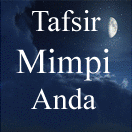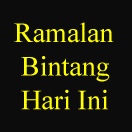Continental crust covers about 34.7 percent
of the Earth’s surface, whereas exposed continents cover
only 29.22 percent of the surface, with the discrepancy
accounted for in the portions of continents that lie underwater
on the continental shelves. Its lateral boundaries are
defined by the slope break between continental shelves and
slopes, and its vertical extent is defined by a jump in seismic
velocities to 4.7–5.0 miles per second (7.6–8.0 km/s) at the
Mohorovicic discontinuity. The continental crust ranges in
thickness from about 12.5 miles to about 37 miles (20–60
km), with an average thickness of 24 miles (39 km). The continents
are divided into orogens, made of linear belts of concentrated
deformation, and cratons, making the stable,
typically older interiors of the continents.
Most of the continental crust is now preserved in
Archean cratons, which form the cores of many continents.
They are composed of ancient rocks that have been stable for
billions of years since the Archean. Cratons generally have
low heat flow, few if any earthquakes, no volcanism, and
many are overlain by flat lying shallow water sedimentary
sequences. Continental shields are places where the cratonic
crust is exposed at the surface, whereas continental platforms
are places where the cratonic rocks are overlain by shallow
water sedimentary rocks, presently exposed at the surface.
Orogens and orogenic belts are elongate regions that are
eroded mountain ranges and typically have abundant folds
and faults. Young orogens are mountainous and include such
familiar mountain ranges as the Rockies, Alps, and the slightly
older Appalachians. Many Archean cratons are welded
together by Proterozoic and younger orogens. In fact, many
Archean cratons can be divided into smaller belts that represent
fragments of the planet’s oldest orogenic belts.
Orogens have been added to the edges of the continental
shield and cratons through processes of mountain building
related to plate tectonics. Mountain belts are of three basic
types, including fold and thrust belts, volcanic mountain
ranges, and fault-block ranges. Fold and thrust belts are contractional
mountain belts, formed where two tectonic plates
collided, forming great thrust faults, folds, metamorphic
rocks, and volcanic rocks. Detailed mapping of the structure
in the belts can enable geologists to reconstruct their history
and essentially pull them apart. It is found that many of the
rocks in fold and thrust belt types of mountain ranges were
deposited on the bottom of the ocean, continental rises,
slopes, shelves, or on ocean margin deltas. When the two
plates collide, many of the sediments get scraped off and
deformed, forming the mountain belts. Thus, fold and thrust
mountain belts mark places where oceans have closed.
Volcanic mountain ranges include places such as Japan’s
Fuji, and Mount St. Helens in the Cascades of the western
United States. These mountain ranges are not formed primarily
by deformation but by volcanism associated with subduction
and plate tectonics.
Fault-block mountains, such as the Basin and Range
Province of the western United States, are formed by the extension
or pulling apart of the continental crust, forming elongate
valleys separated by tilted fault-bounded mountain ranges.
Every rock type known on Earth is found on the continents,
so averaging techniques must be used to determine the
overall composition of the crust. It is estimated that continental
crust has a composition equivalent to andesite (or granodiorite)
and is enriched in incompatible trace elements,
which are the elements that do not easily fit into lattices of
most minerals and tend to get concentrated in magmas.
The continents exhibit a broadly layered seismic structure
that is different from place to place, and different in orogens,
cratons, and parts of the crust with different ages. In shields,
the upper layer typically may be made of a few hundred
meters of sedimentary rocks underlain by generally granitic
types of material with seismic velocities of 3.5 to 3.9 miles per
second (5.7–6.3 km/s) to depths of a few to 10 kilometers,
then a layer with seismic velocities of 3.9–4.2 miles per second
(6.4–6.7 km/s). The lower crust is thought to be made of layered
amphibolite and granulite with velocities of 4.2–4.5 miles
per second (6.8–7.2 km/s). Orogens tend to have thicker lowvelocity
upper layers, and a lower-velocity lower crust.
There is considerable debate and uncertainty about the
timing and processes responsible for the growth of the continental
crust from the mantle. Most scientists agree that most
of the growth occurred early in Earth history since more than
half of the continental crust is Archean in age, and about 80
percent is Precambrian. Some debate centers on whether early
tectonic processes were similar to those currently operating,
or if they were considerably different. The amount of current
growth and how much crust is being recycled back into the
mantle are currently constrained. Most petrological models
for the origin of the crust require that it be derived by a process
including partial melting from the mantle, but simple
mantle melting produces melts that are not as chemically
evolved as the crust. Therefore, the crust is probably derived
through a multistage process, most likely including early
melts derived from seafloor spreading and island arc magmatism,
with later melts derived during collision of the arcs with
other arcs and continents. Other models seek to explain the
difference by calling on early higher temperatures leading to
more evolved melts.
See also CRATONS; GREENSTONE BELTS; OROGENY.

















Tidak ada komentar:
Posting Komentar
Catatan: Hanya anggota dari blog ini yang dapat mengirim komentar.